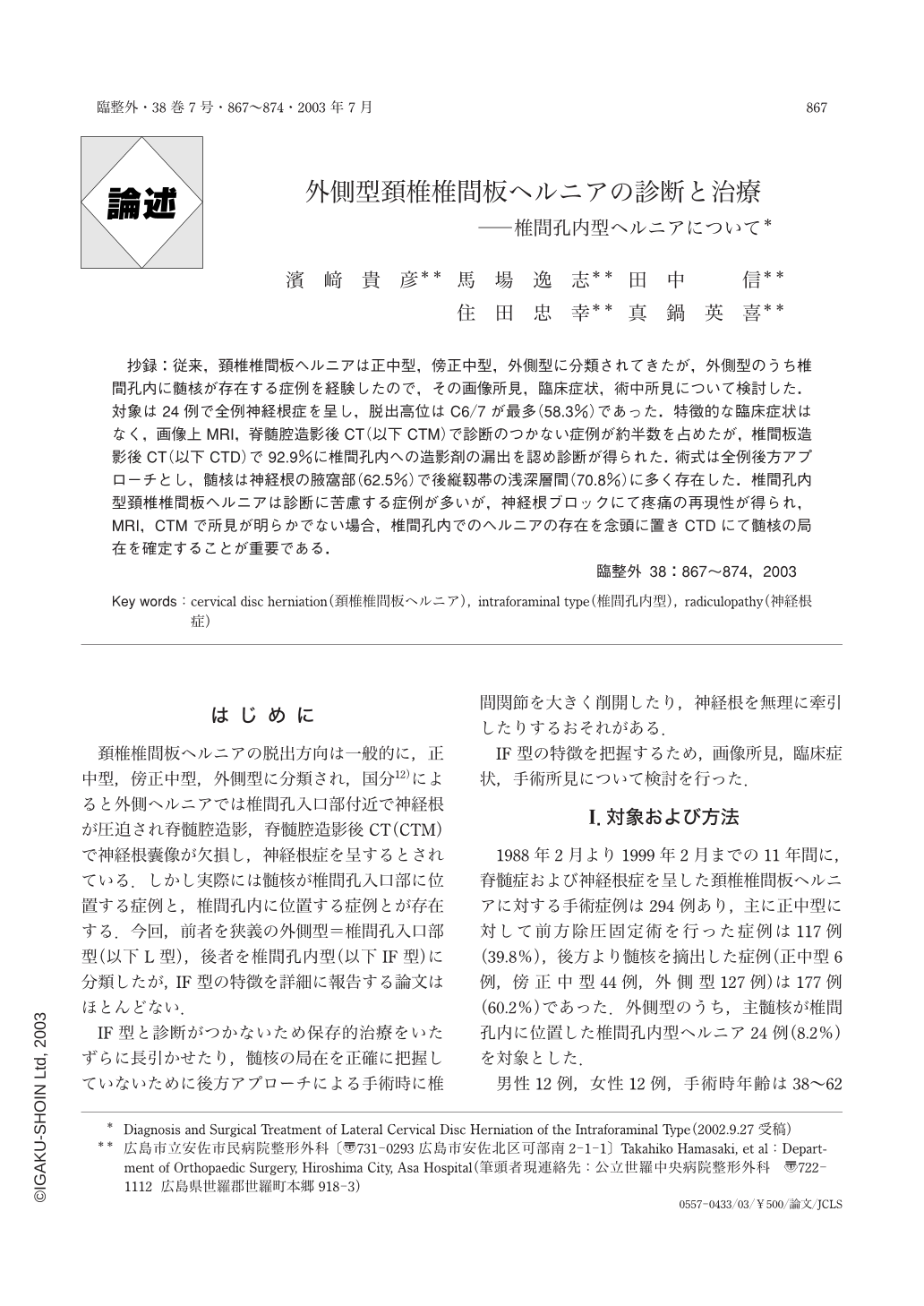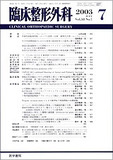Japanese
English
- 有料閲覧
- Abstract 文献概要
- 1ページ目 Look Inside
抄録:従来,頚椎椎間板ヘルニアは正中型,傍正中型,外側型に分類されてきたが,外側型のうち椎間孔内に髄核が存在する症例を経験したので,その画像所見,臨床症状,術中所見について検討した.対象は24例で全例神経根症を呈し,脱出高位はC6/7が最多(58.3%)であった.特徴的な臨床症状はなく,画像上MRI,脊髄腔造影後CT(以下CTM)で診断のつかない症例が約半数を占めたが,椎間板造影後CT(以下CTD)で92.9%に椎間孔内への造影剤の漏出を認め診断が得られた.術式は全例後方アプローチとし,髄核は神経根の腋窩部(62.5%)で後縦靱帯の浅深層間(70.8%)に多く存在した.椎間孔内型頚椎椎間板ヘルニアは診断に苦慮する症例が多いが,神経根ブロックにて疼痛の再現性が得られ,MRI,CTMで所見が明らかでない場合,椎間孔内でのヘルニアの存在を念頭に置きCTDにて髄核の局在を確定することが重要である.
Cervical disc herniation is basically classified into 3 types, central, paracentral, and lateral, however, the disc fragment may be located at the entrance of the foraminal or the intraforaminal region. We encountered rare cases in which the fragment was located in the intraforaminal space, and we report their imaging findings, clinical manifestations, and operative findings.
Twenty-four cases of cervical radiculopathy secondary to disc herniation in 12 men and 12 women ranging in age from 38 to 62 years old are described. The most common level of the lesions was C6/7 (58.3%). There were no manifestations pathognomonic of the intraforaminal type, and more than a half of the cases could not be diagnosed by MRI and CT myelography findings. Leakage of contrast medium into the intraforaminal space by CT discography led to the diagnosis.
Surgery was performed by a posterior approach, and the fragments were found to be located mainly in the axillar portion of the nerve root (62.5%), and in the intraligamentous region between superficial and deep layer of the posterior longitudinal ligament (70.8%).
Because the diagnosis of the intraforaminal type is difficult, so we should keep it in mind consulting the patient with cervical radiculopathy who has no abnomal findings on MRI or CT myelography and perform CT discography to diagnose the lesion.

Copyright © 2003, Igaku-Shoin Ltd. All rights reserved.


